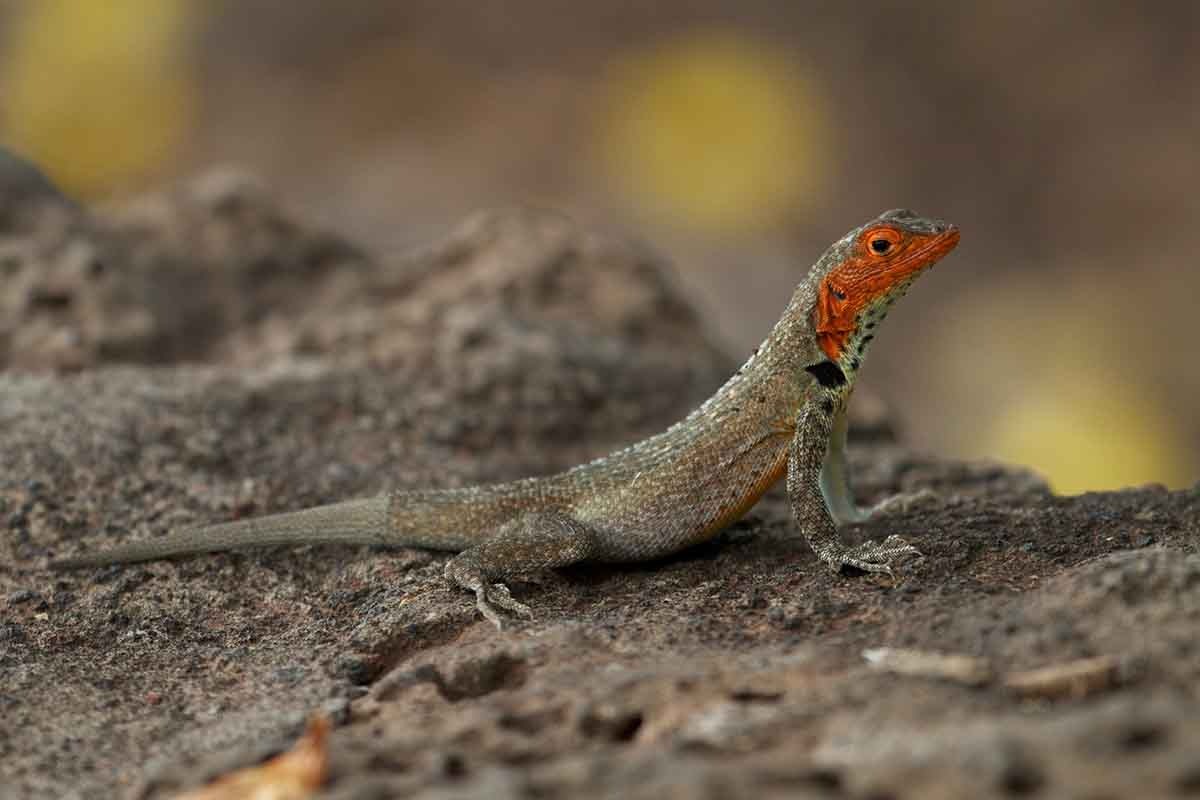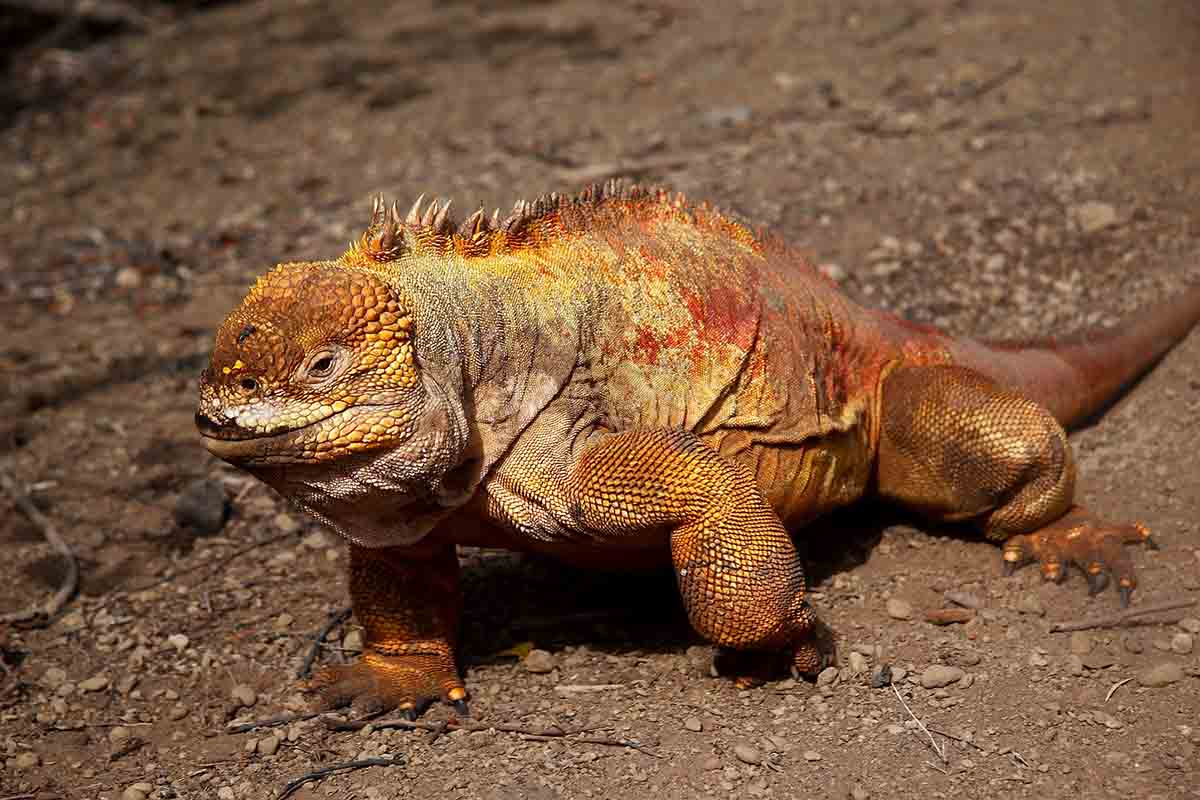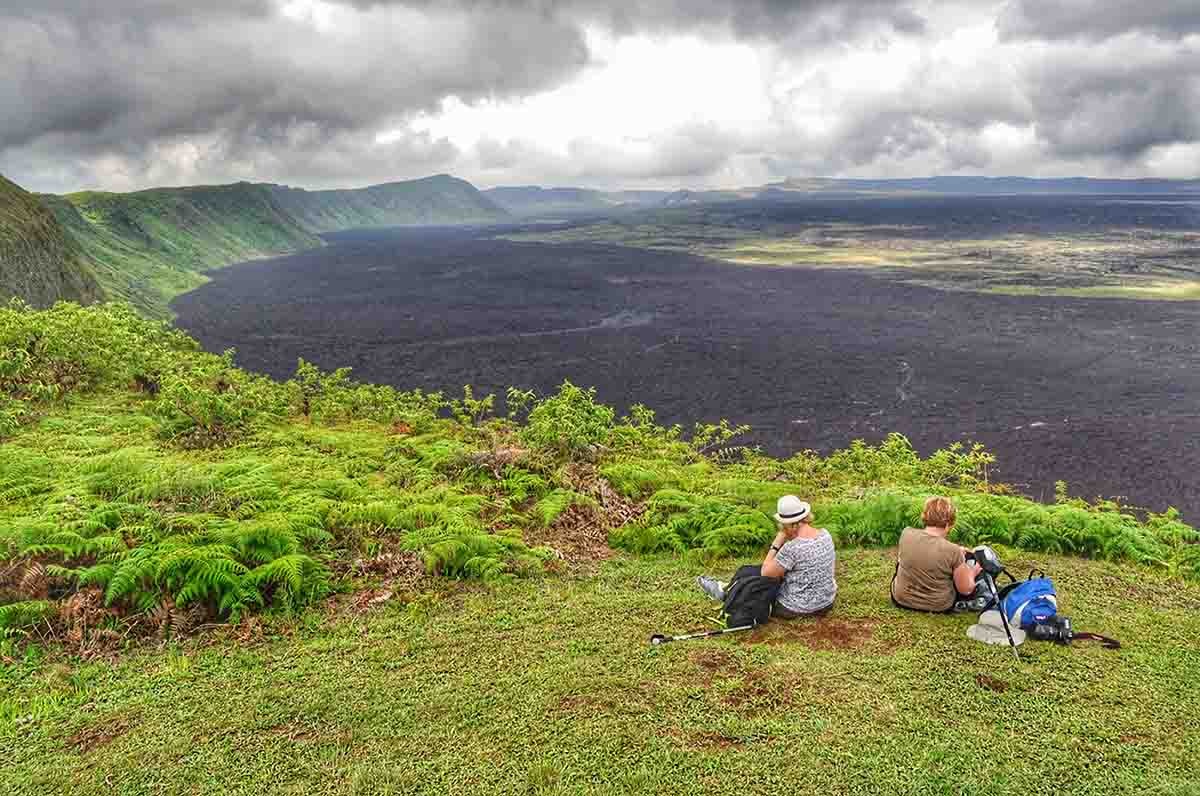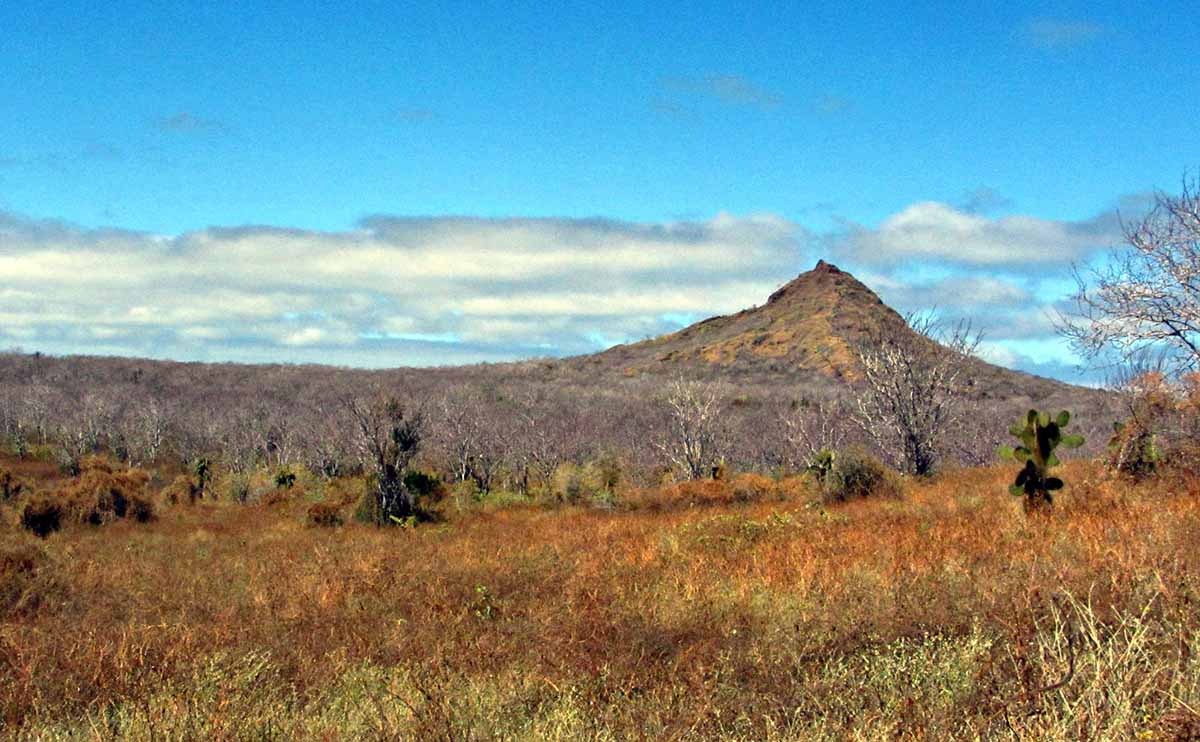AM Egas Port
Puerto Egas is not a port, despite its name. However, you may see some remains from the 1960's colonization attempts. There are many species of wildlife along this trail, including Galapagos Sea Lions, Galapagos Iguanas, Herons, Oystercatchers, and shorebirds. The endemic Galapagos Fur Seal lives in a small area at the end of this trail, called the "grottos". It is much harder to spot up close than its cousin. Land iguanas were reintroduced into the area as recently as 2019. Look around to see these reptiles that had been extinct in Santiago for more than a century.
Snorkeling: From the beach, you can explore an area with rocky bottoms that is ideal for turtles, reef sharks, and fish. Sea lions will often be present, and they are willing to engage with divers.
PM:
Espumilla Beach
Espumilla, a 1km beach of rusty brown sand on the north coast of Santiago, is located at the end. The beach is located in a dry native forest with large mangroves, and is surrounded not only by Galapagos Hawks, but also a variety of doves, finches and mockingbirds. Check the saltpan during rainy seasons, there may be ducks or flamingos.
Buccaneer Cove
The site was named after the fact that pirates, buccaneers and other pirates used it to get tortoises and freshwater during the 18th and 19th centuries. This place has beautiful cliffs with interesting rock formations. The trail is not there, so you can take the dinghy and look out at the wildlife.
Snorkeling: In a bay that is sheltered, you can snorkel with a variety of underwater life, including schools and large numbers of fish, such as angelfish, parrotfishes, snappers or grunts ...), but also sea lions, reek Sharks, and turtles.



